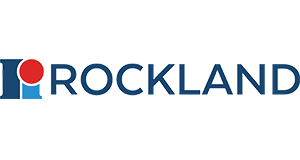Sheep TrueBlot®: Anti-Sheep IgG HRP
Sheep TrueBlot®: Anti-Sheep IgG HRP
Artikelnummer
ROC18-8815-31
Verpackungseinheit
50 µL
Hersteller
Rockland
Verfügbarkeit:
wird geladen...
Preis wird geladen...
Application Note: Sheep IgG HRP TrueBlot has been tested in western blot and immunoprecipitation and may also be used for detection in immunoblotting assays that do not employ immunoprecipitation. Sheep IgG TrueBlot® is provided as 1000X solution. To conserve reagent, we recommend incubating the blots from minigels in sealed bags (removing as much air as possible) with minimal volume (2-3 mLs). If used conservatively at 2.5mls/blot will yield enough reagent for 20 blots. All recommended dilutions for listed applications are intended as an initial recommendation, specific conditions for each protein and antibody combination should be specifically optimized by the end user. Note that there are three key procedural considerations: 1. Protein A or G beads may be used with the Mouse, Goat and Sheep TrueBlot secondaries, but not with the Rabbit TrueBlot secondary. Use of protein A or G beads with the Rabbit TrueBlot will result in contaminating bands. 2. Immunoprecipitate should be completely reduced. 3. BLOTTO/Milk should be used as the blocking protein for the immunoblot.
Clone ID: eB270
Concentration Value: 1000X (see application note, titrated reagent enough for 20 blots)
Western Blot Dilution: 1:1000
General Disclaimer Note: This product is for research use only and is not intended for therapeutic or diagnostic applications. Please contact a technical service representative for more information. All products of animal origin manufactured by Rockland Immunochemicals are derived from starting materials of North American origin. Collection was performed in United States Department of Agriculture (USDA) inspected facilities and all materials have been inspected and certified to be free of disease and suitable for exportation. All properties listed are typical characteristics and are not specifications. All suggestions and data are offered in good faith but without guarantee as conditions and methods of use of our products are beyond our control. All claims must be made within 30 days following the date of delivery. The prospective user must determine the suitability of our materials before adopting them on a commercial scale. Suggested uses of our products are not recommendations to use our products in violation of any patent or as a license under any patent of Rockland Immunochemicals, Inc. If you require a commercial license to use this material and do not have one, then return this material, unopened to: Rockland Inc., P.O. BOX 5199, Limerick, Pennsylvania, USA.
Physical State: Liquid (sterile filtered)
Purity and Specificity: Sheep TrueBlot® Antibody Peroxidase Conjugate was prepared from tissue culture supernatant by Protein G affinity chromatography. Assay by Immunoelectrophoresis resulted in a single precipitin arc against Anti-Sheep Serum. Reactivity is observed against native Sheep IgG by both Western blot and ELISA.
Background: Sheep IgG TrueBlot® is a unique horseradish peroxidase conjugated Anti-Sheep IgG monoclonal secondary antibody. Sheep IgG TrueBlot® enables detection of immunoblotted target protein bands, without hindrance by interfering immunoprecipitating immunoglobulin heavy and light chains. It is easy to generate publication-quality IP/Western Blot data with Sheep IgG TrueBlot®, simply substitute the conventional HRP Anti-Sheep IgG blotting reagent with Sheep IgG TrueBlot® and follow the prescribed protocol for sample preparation and immunoblotting. Sheep IgG TrueBlot® is ideal for use in protocols involving immunoblotting of immunoprecipitated proteins. TrueBlot preferentially detects the non-reduced form of Sheep IgG over the reduced, SDS-denatured form of IgG. When the immunoprecipitate is fully reduced immediately prior to SDS-gel electrophoresis, reactivity of Sheep IgG TrueBlot® with the 55 kDa heavy chains and the 23 kDa light chains of the immunoprecipitating antibody is minimized thereby eliminating interference by the heavy and light chains of the immunoprecipitating antibody in IP/Western blot applications. Applications include studies examining post-translational modification (e.g., phosphorylation or acetylation) or protein-protein interactions.
Low Endotoxin: No
Clone ID: eB270
Concentration Value: 1000X (see application note, titrated reagent enough for 20 blots)
Western Blot Dilution: 1:1000
General Disclaimer Note: This product is for research use only and is not intended for therapeutic or diagnostic applications. Please contact a technical service representative for more information. All products of animal origin manufactured by Rockland Immunochemicals are derived from starting materials of North American origin. Collection was performed in United States Department of Agriculture (USDA) inspected facilities and all materials have been inspected and certified to be free of disease and suitable for exportation. All properties listed are typical characteristics and are not specifications. All suggestions and data are offered in good faith but without guarantee as conditions and methods of use of our products are beyond our control. All claims must be made within 30 days following the date of delivery. The prospective user must determine the suitability of our materials before adopting them on a commercial scale. Suggested uses of our products are not recommendations to use our products in violation of any patent or as a license under any patent of Rockland Immunochemicals, Inc. If you require a commercial license to use this material and do not have one, then return this material, unopened to: Rockland Inc., P.O. BOX 5199, Limerick, Pennsylvania, USA.
Physical State: Liquid (sterile filtered)
Purity and Specificity: Sheep TrueBlot® Antibody Peroxidase Conjugate was prepared from tissue culture supernatant by Protein G affinity chromatography. Assay by Immunoelectrophoresis resulted in a single precipitin arc against Anti-Sheep Serum. Reactivity is observed against native Sheep IgG by both Western blot and ELISA.
Background: Sheep IgG TrueBlot® is a unique horseradish peroxidase conjugated Anti-Sheep IgG monoclonal secondary antibody. Sheep IgG TrueBlot® enables detection of immunoblotted target protein bands, without hindrance by interfering immunoprecipitating immunoglobulin heavy and light chains. It is easy to generate publication-quality IP/Western Blot data with Sheep IgG TrueBlot®, simply substitute the conventional HRP Anti-Sheep IgG blotting reagent with Sheep IgG TrueBlot® and follow the prescribed protocol for sample preparation and immunoblotting. Sheep IgG TrueBlot® is ideal for use in protocols involving immunoblotting of immunoprecipitated proteins. TrueBlot preferentially detects the non-reduced form of Sheep IgG over the reduced, SDS-denatured form of IgG. When the immunoprecipitate is fully reduced immediately prior to SDS-gel electrophoresis, reactivity of Sheep IgG TrueBlot® with the 55 kDa heavy chains and the 23 kDa light chains of the immunoprecipitating antibody is minimized thereby eliminating interference by the heavy and light chains of the immunoprecipitating antibody in IP/Western blot applications. Applications include studies examining post-translational modification (e.g., phosphorylation or acetylation) or protein-protein interactions.
Low Endotoxin: No
| Artikelnummer | ROC18-8815-31 |
|---|---|
| Hersteller | Rockland |
| Hersteller Artikelnummer | 18-8815-31 |
| Verpackungseinheit | 50 µL |
| Mengeneinheit | STK |
| Reaktivität | Sheep (Ovine) |
| Klonalität | Monoclonal |
| Methode | Immunoprecipitation, Western Blotting |
| Isotyp | IgG |
| Wirt | Mouse |
| Konjugat | Conjugated, HRP |
| Produktinformation (PDF) | Download |
| MSDS (PDF) |
|

 English
English





